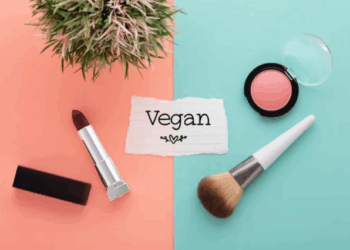The beauty industry is undergoing a seismic shift. For too long, the focus was solely on aesthetics, marketing, and the promise of quick results, often at the expense of the environment and ethical considerations. But a new era has dawned, one where consumers are demanding more. They want products that not only make them look good but also make them feel good about their choices. This has given birth to the conscious beauty movement, a profound evolution that prioritizes sustainability, ethical practices, and a deep respect for the planet and its people. This comprehensive guide will explore the driving forces behind this transformation, the key pillars of a truly ethical and sustainable beauty brand, and the impact this movement is having on both consumers and the industry as a whole.
The Consumer-Driven Revolution

The most significant catalyst for the rise of conscious beauty is the informed consumer. With access to a wealth of information, today’s shoppers are no longer swayed by superficial marketing. They are actively seeking out brands that are transparent and authentic in their practices. This shift is not just a trend; it’s a fundamental change in values.
A. Demand for Transparency: Consumers want to know exactly what they are putting on their skin. They are scrutinizing ingredient lists, questioning the sourcing of raw materials, and demanding proof of a brand’s claims. This has led to the popularity of “clean beauty,” a term that, while not universally defined, generally refers to products made without a long list of potentially harmful or controversial ingredients.
B. Social and Environmental Awareness: The global conversation around climate change, plastic waste, and ethical labor practices has a direct impact on purchasing decisions. Consumers are increasingly aware of the environmental footprint of their everyday products. They are actively looking for brands that share their values, whether it’s by using recycled packaging, reducing water consumption, or supporting fair trade initiatives.
C. The Influence of Social Media: Social media platforms have become powerful tools for both advocacy and accountability. They have given a voice to smaller, independent brands that are pioneering sustainable practices, while also holding larger corporations accountable for their actions. Influencers and content creators focused on ethical living are educating their followers, building a community around shared values, and driving a movement that puts purpose on par with profit.
The Pillars of Sustainable and Ethical Beauty

True conscious beauty is not just about one or two good practices; it’s a holistic approach that is woven into every aspect of a brand’s operation. Here are the core pillars that define a truly sustainable and ethical brand.
A. Responsible and Ethical Sourcing: This is where the journey begins. A responsible brand ensures that every ingredient, from a rare botanical extract to a common emulsifier, is sourced with integrity.
- Fair Trade: This practice ensures that farmers and laborers who harvest ingredients are paid a fair wage and work in safe conditions. It prevents exploitation and supports the economic empowerment of local communities.
- Traceability: Brands that prioritize this can trace every ingredient back to its origin. This level of transparency is crucial for ensuring that the supply chain is free from forced labor and environmental harm.
- Regenerative Agriculture: This goes beyond sustainability to actively improve the ecosystem. It involves farming practices that rebuild soil health, increase biodiversity, and capture carbon, leaving the land in a better state than it was found.
B. Eco-Conscious Formulations: The ingredients themselves must be chosen with a deep understanding of their environmental impact.
- Biodegradable Ingredients: Products that wash down the drain eventually end up in our waterways. Brands focused on this use ingredients that break down naturally and don’t harm aquatic life.
- Avoidance of Harmful Chemicals: This extends beyond personal health to the health of the planet. Avoiding ingredients like certain synthetic fragrances, microbeads, and harsh preservatives minimizes their environmental footprint once they enter the ecosystem.
- Waterless Formulations: Water is a precious resource. Innovative brands are creating solid products like shampoo bars, solid serums, and powdered cleansers that remove water from their formulation, significantly reducing the product’s weight, its carbon footprint during shipping, and its overall water usage.
C. Sustainable Packaging and Waste Reduction: Packaging waste, particularly plastic, is a major problem in the beauty industry. Ethical brands are leading the charge to find solutions.
- Recycled and Recyclable Materials: Brands are moving away from virgin plastics and using materials like post-consumer recycled (PCR) plastic, glass, and aluminum, which can be infinitely recycled.
- Refill and Reuse Systems: This is one of the most effective ways to reduce waste. Companies are offering elegant, durable containers that customers purchase once and then refill with product pouches or pods, drastically cutting down on plastic consumption.
- Minimalist and Biodegradable Packaging: This involves removing unnecessary layers of packaging and using materials that naturally decompose, such as paper made from agricultural waste or compostable plastic.
D. Cruelty-Free and Vegan Practices: Animal welfare is a non-negotiable for many conscious consumers.
- Cruelty-Free: This certification, often from organizations like Leaping Bunny or PETA, ensures that a product has not been tested on animals at any point in its production process, including raw ingredients and the final formula.
- Vegan: A vegan product contains no animal-derived ingredients. This includes common items like beeswax, honey, carmine, and lanolin. The movement toward vegan beauty is fueled by ethical concerns as well as a growing understanding of the benefits of plant-based ingredients.
The Economic and Cultural Impact
The rise of conscious beauty is not just a moral victory; it’s a significant economic and cultural force that is changing the entire industry landscape.
A. Innovation and New Business Models: The demand for sustainability has spurred innovation. Companies are investing in research to find new, plant-based alternatives to traditional ingredients, creating circular economies for their packaging, and developing streamlined supply chains. This has given rise to a new generation of agile, purpose-driven startups that are challenging industry giants.
B. The Brand-Customer Relationship: Conscious brands are building a deeper, more meaningful connection with their customers. By being transparent and sharing their values, they are fostering a sense of community and loyalty that goes beyond a single transaction. Customers feel like they are part of a mission, not just a market. This is particularly effective in a digital age where consumers crave authenticity.
C. The Push for Regulation: As the movement gains momentum, it is putting pressure on governments and regulatory bodies to create clearer standards for what constitutes “clean” and “sustainable” beauty. This will help to reduce “greenwashing”—the deceptive practice of making a brand appear more eco-friendly than it actually is—and provide a more level playing field for genuinely sustainable companies.
D. A Shift in Retail: Major retailers are responding to consumer demand by creating dedicated sections for ethical brands, hosting sustainability campaigns, and setting their own ambitious goals for waste reduction. They recognize that this is not a passing fad but a necessary evolution that will define the future of the beauty market.
The Future of Beauty is Conscious
The conscious beauty movement is a powerful reminder that every choice we make has an impact. It has shifted the conversation from “what does this product do for me?” to “what does this product do for the world?” As consumers continue to demand better, the industry will be forced to adapt, leading to a future where beauty is not only about self-care but also about care for the planet and each other. The ultimate goal is a beauty industry where sustainability and ethics are not a niche category but the standard for every product on the shelf.







